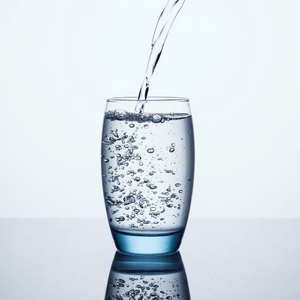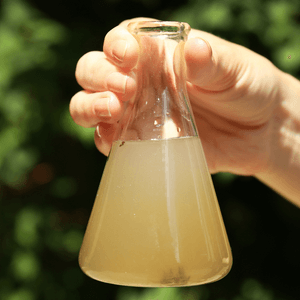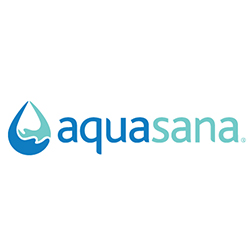Contaminants in Water
How Healthy is Your Water?
You may be asking yourself why I am talking about water. Water filtration has always been in the news and the newest talk is about alkalized water and its benefits. You can exercise, eat right, take high quality supplements, and if you are not paying attention to the water you are showering in or drinking - nothing else is going to matter. We know 70% of our body is water. "Water is the #1 Ingredient for Healthful Longevity". So I am going to try to explain what contaminants in water are and what the different methods of water filtration are.
Types of water.

One day I came home and actually read the insert in my water bill (the Annual Drinking Water Quality Report) and was shocked to see a list of contaminants and their allowable level in my drinking water (drinking water is water from a municipality that is also referred to as tap water). I mean surely that was a joke. I went to the EPA's website and I came across the "National Primary Drinking Water Regulations". If you have not read them before, they are quite interesting. The list contains disinfectants, disinfection byproducts, inorganic chemicals, microorganisms, organic chemicals, and radionuclides. There are special guidelines for lead and a secondary list for aluminum and various other contaminants. That summed it up for drinking tap water without using a water filter.
I further explored the EPA's website and found that well water often faces the same contaminants as drinking water. Municipalities are required to test their water annually for some of the allowable contaminants. Not all contaminants require a yearly test. Well water is not required to be tested since it is not serving the public and the well owner is responsible for testing their own water. If you have well water, don't assume it is healthier than tap water. Have it tested. Well water often has chemicals from farmers, pesticides, and septic systems often use leach fields which can leave contaminants to seep into the ground and enter the water system.
I then moved over to bottled water and traveled over to the FDA's website. The FDA regulates bottled water as food. The definition of bottled water, is water that is intended for human consumption and is sealed in bottles or containers, with no added ingredients except those that may contain safe and suitable antimicrobial agents. Fluoride may also be added. I further read the FDA's report "Regulation of Bottled Water" dated July 8, 2009 and also found out that bottled water is subject to requirements no less protective of the public health than those applicable to water from public water systems using the techniques required by EPA's NPDWRs". You can see from the National Primary Drinking Water Regulations List that bottled water isn't necessarily better than drinking water from the tap.
Bottled Water is also a multi-billion-dollar business and is the fastest growing segment in the beverage industry today. Its quality is seldom found to be higher than tap water. Billions of dollars are spent on advertising campaigns to give you the perception that bottled water comes from pristine mountain springs or pure underground aquifers. After reading the above information, that may not be the case. Bottled water has also been recalled due to contamination by arsenic, bromate, cleaning compounds, mold, and bacteria.
The Contaminants in Water

The EPA's National Primary Drinking Water Regulations mention disinfectants, disinfection byproducts, inorganic chemicals, microorganisms, organic chemicals and radionuclides. I have not mentioned all of the contaminants listed in that report, just a few in each category and their potential health effects.
Disinfectants
- Chloramines - eye/nose irritation, stomach discomfort, anemia
- Chlorine - eye/nose irritation; stomach discomfort
- Chlorine Dioxide - anemia; infants, young children, and fetuses of pregnant women; nervous system effects
Alot of studies have been done on chlorine and certain scientific teams feel there is an association between cancer and chlorinated water. Some of the researchers feel that the risk for cancer is 93% higher among people using chlorinated water. Information taken from Medical College of Wisconsin, Senior Research Team and U.S. Council of Environmental Quality.
Disinfection Byproducts
- Bromate - increased risk of cancer
- Chlorite - anemia; infants, young children, and fetuses of pregnant women; nervous system effects
- Haloacetic Acids - increased risk of cancer
- Total Trihalomethanes - liver, kidney or central nervous system problems; increased risk of cancer
Inorganic Chemicals
- Arsenic - skin damage, circulatory system problems, may increase risk of cancer
- Asbestos - increase risk of developing benign intestinal polyps
- Copper - short term gastrointestinal distress, long term liver or kidney damage. Wilson’s Disease advise doctor if copper level is high in your water.
- Cyanide - nerve damage-thyroid problems
- Fluoride - bone disease
- Lead - various
- Mercury - kidney damage
Chlorine is the most common contaminant found in tap water, lead is the second most common contaminant found in tap water. Lead has its own treatment technique and the EPA estimates that 98% of all homes have pipes, fixtures or solder joints in the household plumbing that can leach some level of lead into the tap water. It has been determined and recognized by the EPA that there is no safe level for lead in drinking water and that any level poses some degree of adverse health effects, especially to small children.
Microorganisms
- Cryptosporidium - Gastrointestinal
- Fecal Coliform and E. Coli - Gastrointestinal
- Giardia Lamblia - Gastrointestinal
- Heterotrophic Plate Count - No Health Effect – refers to bacteria that naturally occurs in water
- Legionella - Legionnaire’s Disease a type of pneumonia
- Total Coliforms 5.0% - bacteria that indicates other forms of potentially harmful bacteria maybe present
- Turbidity measures cloudiness of water
- Viruses (enteric) Gastrointestinal
Organic Chemicals
There are too many organic chemicals mentioned in the report to list. The following are examples that pose an increased risk of cancer Acrylamide, Alachlor, Benzene, Benzo(a)pyrene (PAHs), Carbon Tetrachloride, Chlordane, 1,2 Dichloroethane, 1,2-Dichloropropane, Di(2-ethyllhexyl) phthalate, Dixoin, Epichlorochydrin, Ethylene dibromide, Heptachlor, Heptachlor epoxide, Hexachlorobenzene, Pentachlorophenol, Polychlorinated biphenyls, Tetrachloroethylene, Toxaphene, Trichloroethylene, and Vinyl chloride.
Radionuclides
- Alpha photon emitters 15 picocuries per Liter – increased risk of cancer
- Beta photon emitters 4 millirems per year – increased risk of cancer
- Radium 226 and 228 combined 5pCi/L – increased risk of cancer
- Uranium 30ug/L – increased risk of cancer, kidney toxicity
A National Secondary Drinking Water Regulation has been adopted and regulates the following items Aluminum, Chloride, Color, Copper, Corrosivity - noncorrosive, Fluoride, Foaming Agents, Iron, Manganese, Odor, pH 6.5-8.5, Silver, Sulfate, Total Dissolved Solids and Zinc.
High levels of aluminum have turned up in the brains of Alzheimer's disease victims
and some scientists believe that these deposits are only a side effect of Alzheimer's while others believe that
aluminum may play a central role in causing the disease. Aluminum does occur naturally in some waters but it is
also introduced as aluminum sulphate by some water departments to remove fine particles, color and bacteria.
Municipal water departments usually control the water to a slightly alkaline condition, i.e., pH between 7 and 8.
In alkaline conditions aluminum precipitates as fine solid particles, which are then filtered out by means of sand
filters. However, sand filters become less efficient for particles as small as 4 to 5 microns and therefore fine
particles slip through. Some studies have indicated that the risk of impaired mental functions was "almost 10 times
higher in areas where the aluminum levels in drinking water were high."
Types of Water Filtration
Reverse Osmosis
Reverse Osmosis is best known for its use in desalination (removing salt from water). This process is sometimes referred to as de-ionized or de-mineralized water. This type of system is widely used to provide industries with purified water. The process used for home filtration forces water through a fine semi-permeable membrane under pressure which removes particles smaller than the water and may leave particles or contaminants larger than the water behind. This process uses approximately 3X as much water as it filters and it is non-selective in its removal of dangerous and beneficial minerals. Some systems have an optional 2nd sediment filter with smaller pores or an activated carbon filter to trap organic chemicals, and chlorine which may not be removed by the semi-permeable membrane. You can also add an ultra-violet lamp for disinfecting any microbes left after the other optional filters.
Ultraviolet (UV) Radiation
UV Radiation offers a Germicidal treatment for water. This utilizes a Mercury low pressure lamp and is an effective means of sanitizing water. The adsorption of UV light by the DNA and proteins in the microbial cell results in the inactivation of the microorganism. It is an effective sanitizing treatment and can cause oxidation of organic compounds. One of its disadvantages is that it decreases resistivity and will not remove particles, colloids, or ions from the water.
Carbon Adsorption
This is one of the most widely used methods for home water filters. It improves water by removing disagreeable tastes and odors, including chlorine. It also removes many chemicals and gases, and some microorganisms. However, it will not remove totally dissolved solids, hardness, or heavy metals. Only a few carbon filter systems have been certified for the removal of lead, asbestos, cysts, and coliform. There are 2 types of carbon filter systems, granular activated carbon, and solid block carbon. Activated carbon is created from a variety of carbon-based materials in a high-temperature process that creates a matrix of millions of microscopic pores and crevices. The pores trap microscopic particles and large organic molecules, while the activated surface areas cling to, or adsorb, small organic molecules. An activated carbon filter removes microorganisms, certain organic chemicals, pesticides, THMs (the chlorine by-product), trichloroethylene (TCE), and PCBs. The diameter of the pores in the carbon filter and the diffusion rate of organic molecules through the pores is how it controls what it filters. Carbon is usually used in combination with other treatment processes. The placement of carbon in relation to other components in your filtration process is an important consideration in the design of a water purification system.
Distilled Water
This process removes chemicals similar to those removed by reverse osmosis except it removes them through a water evaporation process. This evaporation process removes any chemicals or organic materials with higher boiling points than water. This would include bacteria, minerals, trace amounts of metals, many volatile organic chemicals (VOCs), and nitrate. It is valuable in its removal of the potentially deadly VOCs and nitrate but it also strips water of nearly all of its natural minerals like reverse osmosis does.
Alkalized Water
Uses a filtration system utilizing a .01M filter and is successful at removing parasites, bacteria, cysts and viruses. It is also very effective at removing chlorine and helps to remove fluoride and other harmful chemicals. It works by producing ionized water. Water runs through positive and negative electrodes and it then separates the water into acid and alkaline water. Water contains 5-6 water molecules per cluster instead of 10-13, allowing your body to utilize it better to promote cell health. It is recommend to maintain a water pH of 8.5-10.5 (blood is 7.35-7.45). This will flush out acid waste from your body when you drink it. I went to a meeting on alkalized water and the water does not stay alkalized overnight. You should also be aware of the health risks associated with alkalosis as well as acidosis.
Ion Exchange
This process percolates water through bead-like spherical resin materials (ion-exchange resins). Ions in the water are exchanged for other ions fixed to the beads. The two most common ion-exchange methods are softening and deionization.
Softening is used primarily as a pre treatment method to reduce water hardness. The softeners contain beads that exchange two sodium ions for every calcium or magnesium ion removed from the "softened" water. The other form is Deionization. Deionization (DI) beads exchange hydrogen ions or other ions for contaminants in the water. This exchange of resins is a dual process, once the contaminants are picked up, they are then "regenerated" and the purification process is reversed, replacing the contaminants bound with the resins with hydrogen ions or another type of ion. It can be an important component of a total water purification system when used in combination with other methods.
Filtration
There are 3 Types of microporous filtration: depth, screen and surface. Depth filters are matted fibers or materials compressed to form a matrix that retains particles by random adsorption or entrapment. Screen filters are inherently uniform structures which, like a sieve, retain all particles larger than the precisely controlled pore size on their surface. Surface filters are made from multiple layers of media. When fluid passes through the filter, particles larger than the spaces within the filter matrix are retained. Depth filters are usually used as pre-filters because they are an economical way to remove 98% of suspended solids and protect elements downstream from fouling or clogging. Surface filters remove 99.99% of suspended solids and may be used as either pre filters or clarifying filters. Screen filters are placed at the last possible point in a system to remove the last remaining traces of resin fragments, carbon fines, colloidal particles and microorganisms.
Ultra Filtration
This filter functions as a molecular sieve. Separating dissolved molecules on the basis of size by passing a solution through an infinitely fine filter. These filters are tough, thin, selectively permeable membrane that retains most macromolecules above a certain size including colloids, microorganisms and pyrogens. Smaller molecules, such as solvents and ionized contaminants, are allowed to pass into the filtrate. Available in selective ranges. Membranes will retain most, but not necessarily all, molecules above their rated size.
What Type of Water Filtration Do I Use.
After reading all the information on the various types of filtration. The point that stood out the most is you need a combination of carbon, ion, and micron filtration. I use the Aquasana Counter Top Drinking Water Filter and Shower Filter because they offer a multi-stage filtration process. I feel that these two units are the best point-of-use water filtration products on the market and one that removes the most contaminants in water. Aquasana's units combine carbon filtration, ion exchange and sub micron filtration. Their countertop unit filters out chlorine, lead, prescription drugs, pharmaceuticals, VOCs, MTBE and cysts (chlorine-resistant parasites). It also leaves in the natural trace minerals. They use a patented twin cartridge drinking water filter and have a counter top or under sink unit available. It is easy to install and fits on most standard kitchen faucets. It can be used on tap water or well water and provides up to 30 gallons an hour. The cartridges last 6 months and filter approximately 500 gallons of Natural, Healthy, Great-Tasting water.
Their Shower Filter uses another patented two-stage process which removes chlorine and balances the pH. It also filters out harmful VOCs and THMs. It utilizes a natural copper/zinc mineral media and a carbonized coconut shell medium for the removal of synthetic chemicals, THMs and VOCs that vaporize from tap water and are inhaled or absorbed through the skin are extremely harmful. There is as much or more chlorine in tap water as there is in most swimming pools. Chlorine is one of the worst contaminants in water, stripping the natural protective oils from skin and hair, causing excess dryness. Without the harsh effects of chlorine, you'll notice significant cosmetic benefits such as softer skin and hair in a week. I began using this shower filter due to extremely dry skin. I am proud to report I no longer have dry skin and anyone who comes for a visit, always comments on the water after using the shower.
Hope this helps you to make a decision on what type of filtration system you will be purchasing. The quality of your water matters especially when comparing tap vs bottled water!
Written by Mara Gerke CA, CNHP, All Rights Reserved.
References for this article:Aquasana, wwww.freedrinkingwater.com, www.wikipedia.com, www.ionways.com, www.epa.gov/safewater/ and FDA.gov

